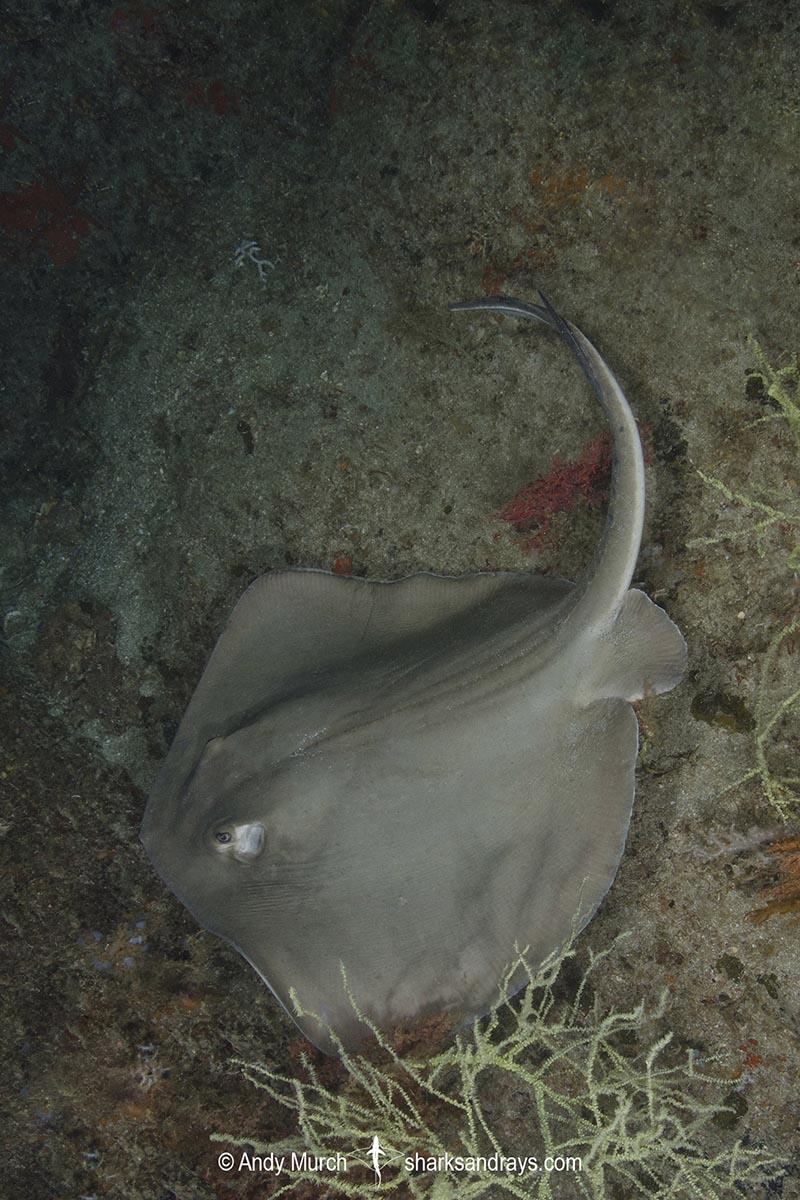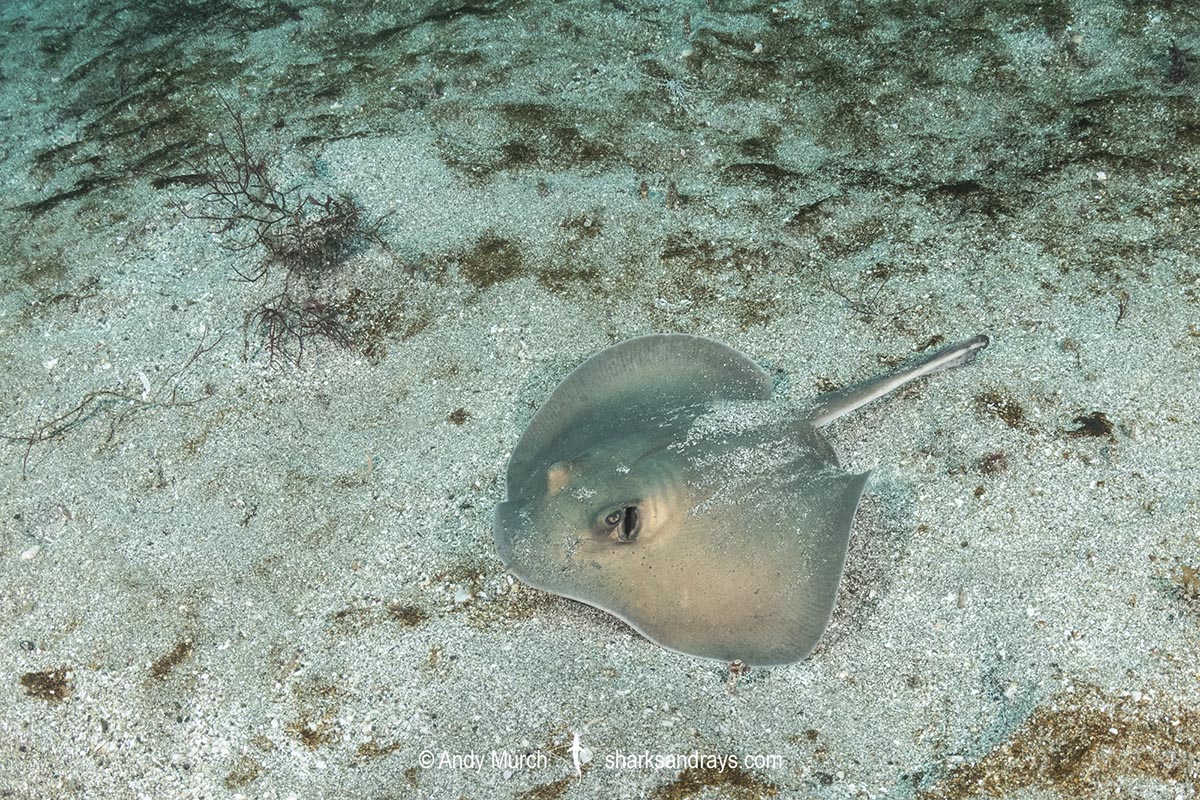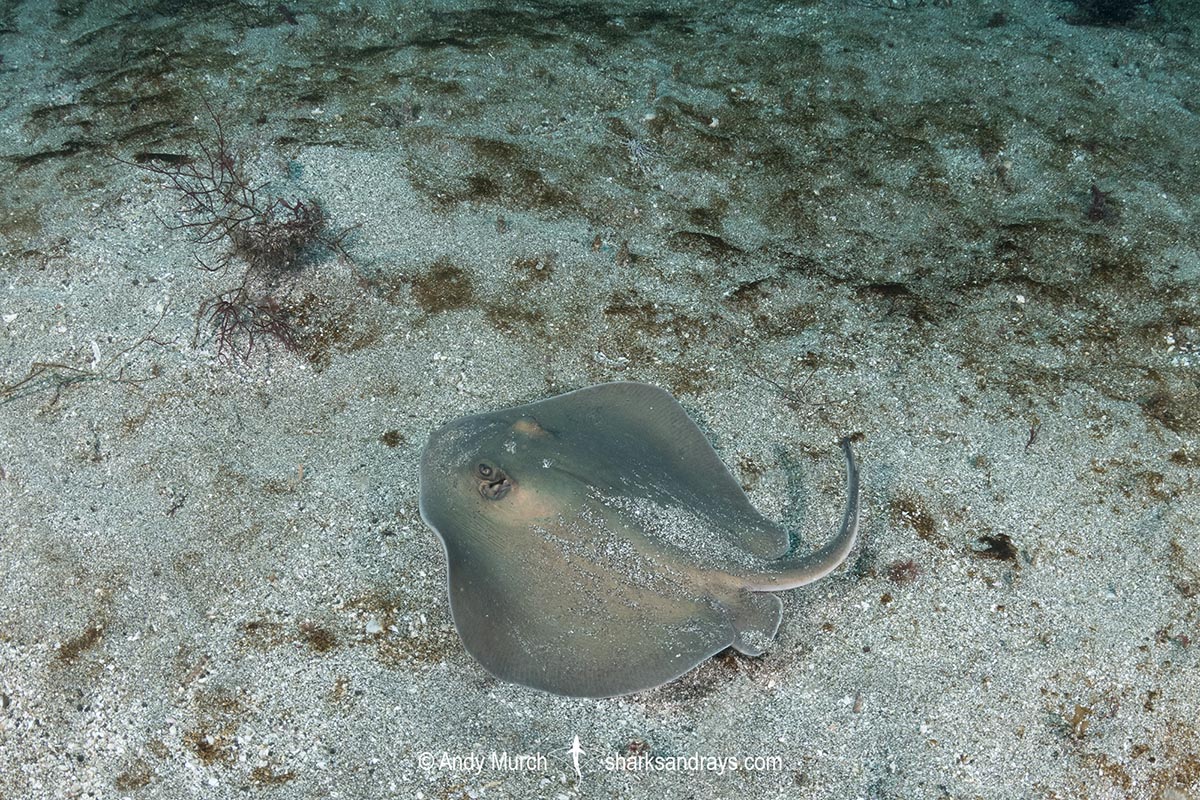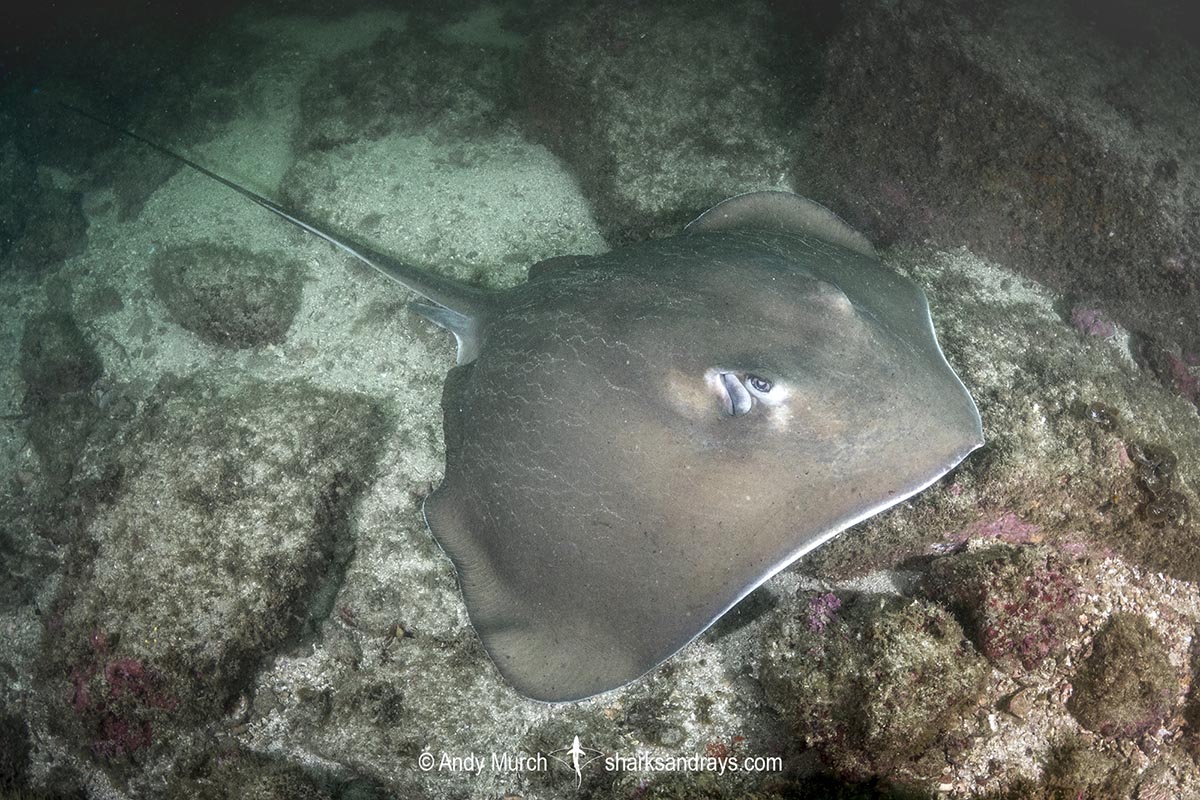Common name(s)
Diamond Stingray
Binomial
Hypanus dipterurus
Synonyms
Dasyatis dipterura, Dasyatis dipterurus, Dasyatis hawaiensis, Dasyatis hawaiiensis, Dasybatis dipterura, Dasybatis dipterurus.
Identification
A large stingray with a vaguely kite-shaped disc that is slightly wider than long; disc width approximately 1.1 x length. Snout obtusely angular with a slightly protruding tip. Anterior margins of disc straight or weakly convex. Pectoral fin apices vary from broadly rounded to angular. Pelvic fins large and triangular with rounded apices.
Eyes medium-sized and protruding. Snout length 1.5 x combined eye and spiracle length.
Mouth broad with 5 oral papillae. Deep labial furrows around mouth. Mouth weakly arched. Lower jaw concave at symphysis. Skirt shaped nasal curtain with a weakly fringed margin. Nostrils thin, positioned obliquely.
A row of thorns along midline from nape to caudal tail. Short row of thorns on each shoulder. Tail wide and depressed at base, tapering to end of ventral fold, then filamentous to tip. Tail length (rarely intact) approximately 1.2-1.6 x disc width. Ventral finfold short; length roughly equal to 1/3rd of pre-cloacal disc length. Dorsal finfold short but prominent. Both caudal folds deeper than adjacent tail. One tail sting usually present.
Colour
Dorsum grey, reddish-brown, or olive grey. Ventrum white, usually with a dusky disc margin. Tail beyond caudal sting often dusky or black; darker in juveniles. Ventral fin fold may be pale or very dark.
Size
Maximum disc width 122cm. Disc width at birth 18-23cm.
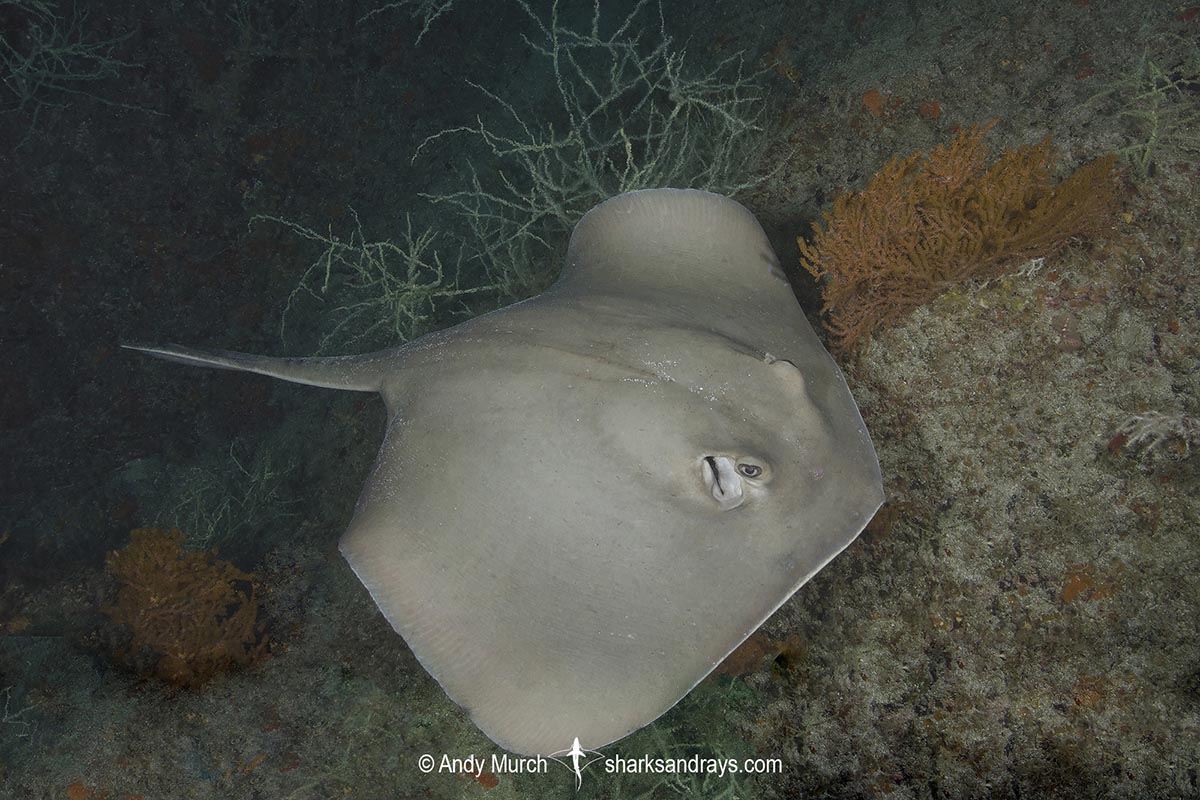
Conservation Status
ENDANGERED
The diamond stingray (Hypanus dipterurus) is captured and retained in commercial trawl fisheries and in intensive artisanal gillnet and longline fisheries across its entire range, except for southern California, the Hawaiian islands, and the Galápagos Islands where it is not targeted and populations are relatively stable.
Catch data indicates the diamond stingray has decreased by 30-49% in the last three generations.

Habitat
Tropical/sub-tropical seas. On sandy or muddy substrates, often adjacent to reefs, also within kelp beds. From shallow bays to 150m on the continental shelf. Also around offshore islands and seamounts.
Distribution
Tropical eastern Pacific. Found from southern California to central Peru including offshore archipelagos; Revillagigedo to Galapagos. Also recorded from Hawaii.
Reproduction
Matrotrophic aplacental viviparity. 1-4 pups per litter. Gestation approximately 3 months.
Diet
Diet consists mainly of worms, crabs, and clams.
Behavior
Sedentary; spends much of the day resting on the substrate.
Reaction to divers
A shy species that is generally difficult to approach but is sometimes tolerant if not approached too closely.
Diving logistics
Diamond stingrays can be encountered throughout their range but they are especially common in the Sea of Cortez. Cabo Pulmo on Baja’s Eastern Cape has one of the best reef systems in the area and is a very good area for this species.
I have also encountered diamond stingrays further north in the Midriff Islands, around Loreto, and while snorkeling at numerous remote beaches along the east coast of Baja.
At the other end of their range, diamond stingrays are encountered in the Galapagos Islands.


